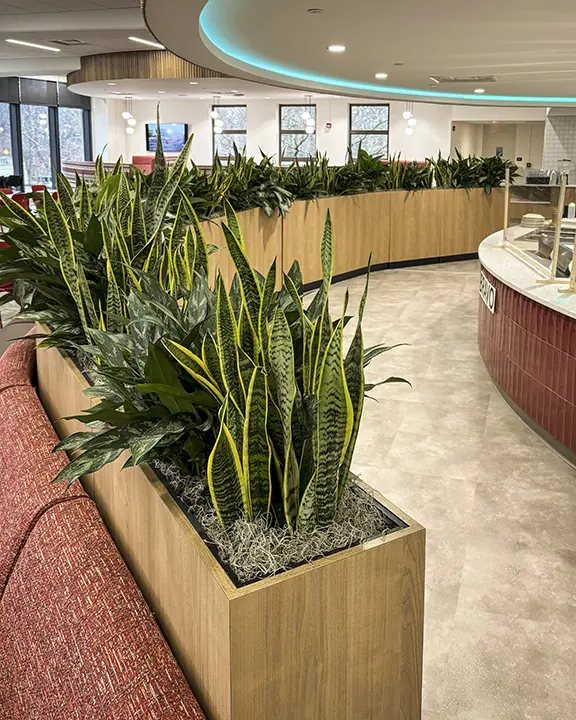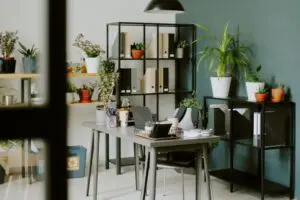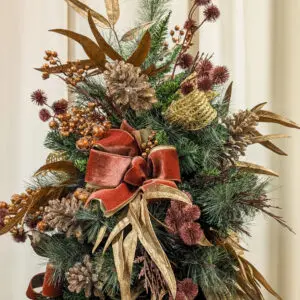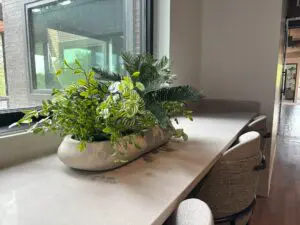As a design professional, you know that the FF&E (Furniture, Fixtures, & Equipment) package is where a vision truly comes to life. It’s the tactile layer that defines user experience, functionality, and aesthetics. In today’s market, the most impactful FF&E packages are doing more than just filling a space—they are actively contributing to the well-being of occupants.
This is where biophilic design comes in to FF&E. It’s the next evolution in specifying interior elements that not only look good but also foster a deeper connection to nature, creating healthier, more productive, and more engaging environments. This blog post is your guide to incorporating this crucial trend into your specifications, mixing industry language with actionable ideas.
The Power of Biophilic FF&E: More Than Just Plants
While live plants are a cornerstone of biophilic design, they are just one piece of the puzzle. The most effective biophilic spaces integrate multiple elements that mimic or connect with nature. When specifying FF&E, you have a direct opportunity to influence these connections. This is a key part of FF&E trends for healthy workplaces, setting your projects apart and delivering measurable value to your clients.
Let’s break down the “F,” “F,” and “E” of your specifications.
1. Furniture (F): Biomimicry and Natural Materials
This is your most direct opportunity to introduce biophilic principles into user touchpoints.
- Natural Materials & Textures: Prioritize specifying furniture made from natural, sustainable materials. Think solid woods with visible grain (FSC-certified is a bonus), cork, rattan, bamboo, wool, and natural stone. These materials bring a sense of authenticity and organic texture that synthetic materials cannot replicate. This directly aligns with sustainable furniture design principles.
- Integrated Planters: Don’t just place a pot in a corner. Specify planters that are built into furniture (e.g., modular seating with integrated planters), fixtures (e.g., green screens or dividers), or millwork. This seamless integration makes the green elements feel like a deliberate, permanent part of the design.
- Biomorphic Shapes: Move away from harsh, rigid lines. Specifying furniture with curved, organic, or sinuous shapes—like those found in nature—can create a sense of calm and flow. Consider desks with rounded corners, seating that mimics the gentle curves of a riverbank, or lighting fixtures with fractal patterns.
2. Fixtures (F): Illuminating and Activating the Senses
Fixtures are the permanent, integrated elements that control light, sound, and water—all key biophilic principles.
- Dynamic Lighting: Lighting fixtures are a powerful tool. Specify systems that can mimic the natural circadian rhythms of the sun—changing color temperature and intensity throughout the day. Look for fixtures with a high CRI (Color Rendering Index) to make your materials and plants look their best.
- Acoustic Elements: Fixtures can help manage sound in a way that feels natural and calming. Consider acoustic panels made from natural materials like felt or cork—or better yet, a sound-absorbing moss wall that also brings visual softness.
- Water Features: A well-integrated water feature, from a simple fountain to a complex waterfall, can be a stunning fixture. The sight and sound of moving water provide a powerful biophilic connection. Also, discreet water features are a great option as the gentle sound of trickling water helps mask background noise and creates a more soothing environment.
3. Equipment (E): The Living and Evolving Elements
Biophilic elements are often considered part of finishes or furnishings, but thoughtful equipment choices can play a major role in supporting nature-connected design.
- Integrated Living Walls: These are the ultimate expressions of biophilic FF&E! They serve as living art, air purifiers, and stunning focal points. Specifying a living wall requires careful consideration of automated sub-irrigation, lighting, and maintenance, making a specialized partner essential. These systems are key equipment components that support long-term plant health.
- Sustainable, Low-Impact Appliances: Energy-efficient systems and low-water-use appliances reduce environmental impact and help maintain indoor air and thermal quality—core pillars of biophilic design.
- Quiet, Low-Sensory Disruption Tech: Selecting fans, appliances, and computer systems with low decibel ratings supports a calmer, more natural acoustic environment. Discreet equipment allows natural sounds—like trickling water or outdoor birdsong—to take center stage.
Expert Sourcing and Specification for Your Biophilic FF&E
Successfully specifying a biophilic FF&E package requires a meticulous approach to sourcing. When creating your furniture schedules and specifying your finishes, consider:
- Traceability: Can you verify the source of the materials? Look for certifications like FSC for wood or Cradle to Cradle for other products.
- Health & Wellness: Are finishes and adhesives low-VOC? Prioritize products with certifications like GREENGUARD or Declare.
- Longevity: Biophilic design is about a lasting connection. Specify durable products that will stand the test of time and age gracefully.
Partner with Oakland Green Interiors for the Living Elements of Your FF&E
While you expertly handle the selection of desks, chairs, and lighting, we are the specialists in the living, breathing part of your FF&E package. We partner with architects, interior designers, and property managers to provide seamless integration of living walls, custom planters, and interior plantscapes into your design blueprints.
We ensure every living element is specified for long-term health, effortless maintenance, and stunning visual impact.
Ready to specify biophilic FF&E for your next project? Let’s discuss how we can bring your vision to life!






